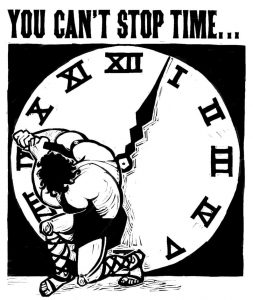The latest cumulative update for supported Microsoft’s Windows operating systems addressing daylight saving time and time zone changes is now available on the Microsoft Download Center. This update supersedes and replaces older updates released previously as noted in the full Knowledge Base article, namely KB 2756822 released in October. All additional time zone changes released as hotfixes after the update 2756822 are incorporated into this update.
It contains the following changes:
- Bahia Standard Time: Starting in 2012, Bahia Standard Time will no longer have DST.
- Azores Standard Time: Changes reflect the end of DST on October 28, 2012 for Azores Standard Time. These changes were released as KB2769756. This update includes the changes for DST for Azores Standard Time in Windows 8 and Windows Server 2012. Additionally, this update includes the changes found in KB2769756. The new rules for DST for 2013 and onwards were released as part the October 2012 cumulative time zone update in KB2756822.
- Fiji Standard Time: The government of Fiji has announced new DST rules for 2012 through 2013. DST starts at 2:00 A.M. on Sunday October 21, 2012 and ends at 3:00 A.M. on Sunday January 20, 2013. This update applies to Windows 8, Windows Server 2012, Windows 7, Windows Server 2008 R2 and down. Additionally, the changes that are included in the October 2012 cumulative time zone update that is described in KB2756822 are found in this update.
- Jordan Standard Time: Changes the UTC offset for Jordan Standard Time from (UTC+2) to (UTC+3). Therefore, the display name of the time zone is changed to (UTC+03:00) Amman. From 2013 onwards, Jordan Standard Time will no longer have DST.
So what should you do to make sure that your computers are ready for the change?
Most applications and services reference the underlying Windows operating system for their date and time related rules, with some exceptions. We outline the various software updates to select Microsoft products (including various releases of the Microsoft Windows operating systems, Microsoft Office and other applications) on the Microsoft Daylight Saving Time Help and Support Center. There, we have information and links to updates for various products in mainstream and extended support affected by this change, as well as other various changes to DST offsets and time zones around the world.
If you use Microsoft Update on your PC at home, chances are you’re already covered. The latest update from October may already be installed on your PC if you have turned on Automatic Update in Windows. This ensures you’ll get the latest security and other important updates from Microsoft automatically. If you’re not sure if the update has been applied, visit the Microsoft Update site for more information.
If someone manages your network at work, it’s likely the needed updates are schedule to be deployed to your computers and devices, if they haven’t been installed already.
For IT professionals managing PCs, servers and Microsoft software installations, please visit http://www.microsoft.com/time for more details. Also, visit the support websites of any other software companies to see if you need to apply any updates. It’s not just Microsoft software that may require updates. Additionally, for the change in Russia, we provide specific details and guidance in country at http://support.microsoft.com/gp/cp_dst/ru.
While Microsoft’s Services infrastructure will be updated to reflect DST changes, it’s important that your computers — both clients and servers that interact with these services — also have the latest Windows cumulative updates for DST and time zone changes applied in order to ensure data integrity.
As always, thanks to the good folks in Windows and those across the company working to help manage time… especialy the number of daylight saving time and time zone changes that come in from various corners of the world. You can find this and much more documented over at http://www.microsoft.com/time and over on the Windows blog at http://blogs.technet.com/dst2007.
Tags: Windows, Microsoft, Daylight Saving Time, Daylight Savings Time, RSS, DST.
Also available via http://bit.ly/TFJccp
